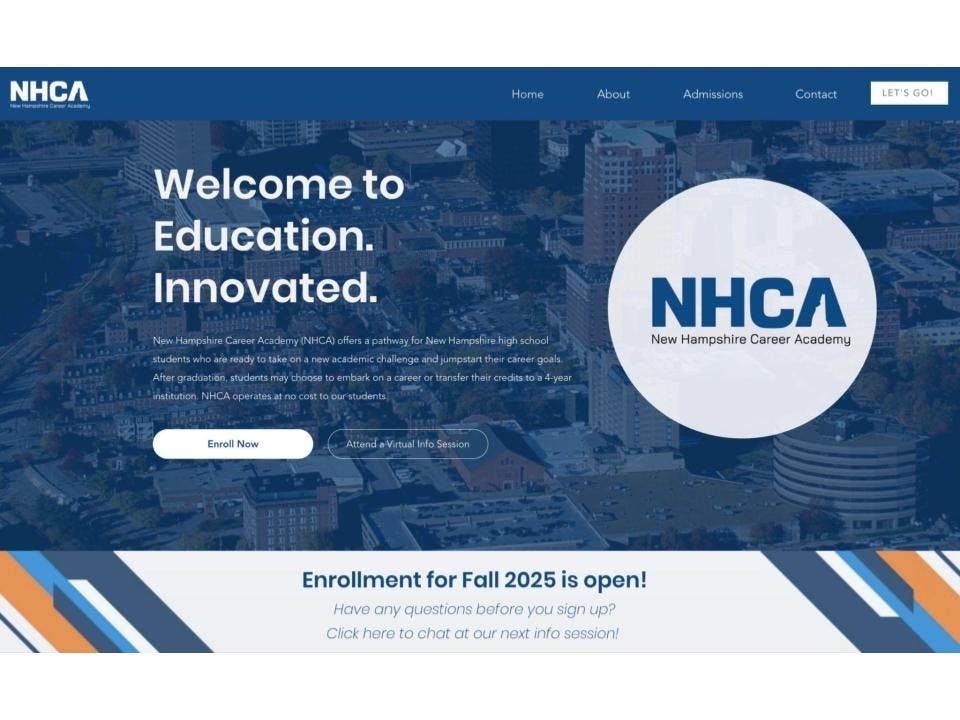A Unique Opportunity for New Hampshire Students
New Hampshire students now have the chance to earn both a high school diploma and an associate’s degree in their senior year, thanks to the New Hampshire Career Academy. This innovative dual-enrollment program is designed to provide students with a head start on their post-secondary education while also equipping them with practical skills for the workforce.
The academy is a public charter school that partners with the state’s community college system. This collaboration allows students to pursue a variety of educational paths, including earning an associate’s degree, a vocational certificate, or college credits that can be transferred to a four-year university. Importantly, the program is free for all students, removing financial barriers to higher education.
Program Offerings Across Three Community Colleges
Three community colleges are currently involved in the initiative: Great Bay Community College in Portsmouth, Manchester Community College, and NHTI, Concord’s Community College. Each institution offers distinct programs tailored to different career interests.
NHTI provides options such as dental assisting, sports management, and hospital and tourism management. Manchester Community College offers programs in health information, education, business, and cybersecurity. Great Bay Community College has programs in veterinary technology, homeland security, and digital media communication. These diverse offerings ensure that students can find a program that aligns with their future goals.
The Vision Behind the Career Academy
The concept of the career academy was first introduced by Frank Edelblut, the former commissioner of the New Hampshire Department of Education, in 2017. Since then, the program has grown beyond its original vision, evolving into a more comprehensive and accessible option for students across the state.
Patrick O’Mara, the executive director of the career academy, has been instrumental in shaping the program’s direction. With experience in nonprofit work and management, O’Mara has taken on multiple roles, including rewriting the school’s charter, navigating the approval process with the State Board of Education, and establishing the school as a functional institution.
Now, the focus is on attracting students to the program. For the 2025-2026 school year, approximately 80 to 100 spots are available. Since May, dozens of students have submitted applications, and information sessions have been held throughout the state. O’Mara notes that there is clear interest in the program, especially among students who may face financial or academic challenges in accessing traditional college pathways.
A Supportive Learning Environment
One of the key features of the academy is its in-person component, which sets it apart from remote learning models. Students who participate in the program can still engage in extracurricular activities, such as sports and clubs, through a Memorandum of Understanding (MOU) with local school districts. This arrangement ensures that students remain connected to their home schools while also benefiting from the resources of the community colleges.
O’Mara emphasizes that the program is not just a school but a “school within a school.” Each community college has designated staff on site to provide additional support to students. These staff members act as academic advisors, helping students transition smoothly from high school to college life.
Building Relationships and Ensuring Success
O’Mara has spent significant time reaching out to interested students and addressing past challenges, such as high attrition rates. The application process is the first step in assessing a student’s readiness for the program, followed by family meetings to ensure everyone understands the commitment involved. Family support is crucial for student success, and the academy places a strong emphasis on creating a supportive learning environment at home.
Students who complete the program can earn an associate’s degree in two years, allowing them to enter the workforce earlier than traditional college students. They can also use the credits earned toward a bachelor’s degree, providing flexibility in their educational journey.
Benefits for Students and the State
The program covers tuition, administrative fees, and textbooks, along with providing students with a school laptop. This financial support makes higher education more accessible and reduces the burden on families.
From a broader perspective, the initiative supports the state’s goal of having 65% of adults aged 25 or older with some form of post-secondary education by 2025. By increasing enrollment in community colleges, the program helps meet this target while also preparing students for the workforce.
Chancellor Mark Rubinstein has been a strong advocate for the program, working closely with the academy to ensure no student is hindered from pursuing higher education. O’Mara highlights the efficiency of the program, noting that it operates without relying on property taxes, using only state funds already allocated for students.
Future Goals and Expansion
O’Mara has ambitious goals for the academy, aiming to expand the program to every community college in New Hampshire by 2030. The initial phase focused on Concord, Manchester, and Portsmouth due to their larger populations, and O’Mara believes this strategic approach was successful.
The business community in New Hampshire is also showing interest in the program, recognizing the value of having skilled workers ready to enter the job market. O’Mara is working with local chambers of commerce to help students secure jobs that match their training.
How to Get Involved
Students and parents interested in the program can visit the New Hampshire Career Academy website, sign up for a virtual information session, or complete the enrollment form. From there, they will be scheduled for a direct conversation with the academy team to discuss the program in detail.
With its unique structure, strong support systems, and alignment with state goals, the New Hampshire Career Academy is setting a new standard for education in the region.







